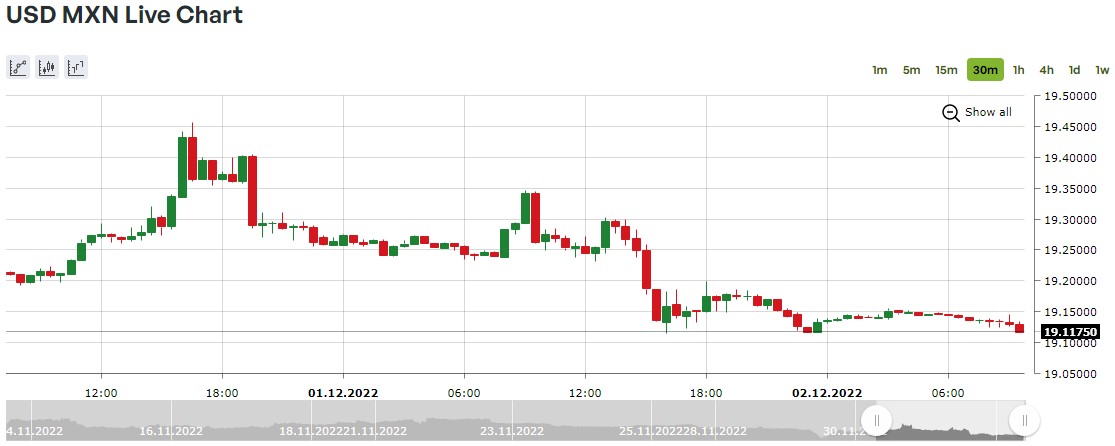- Education
- About Forex
- Volatility in Trading
Volatility in Trading - Volatility Analysis
Volatility Analysis
Volatility analysis is used both on the stock and currency exchanges, as well as on the derivatives and commodity markets. This is one of the most significant indicators that has an important impact on the construction of investment and trading strategies.
Volatility Definition
In simple words, volatility is the range within which the price fluctuates in the short term. This concept can also be defined as the difference between the maximum and minimum value of an asset in a certain period of time. Volatility is usually expressed as a percentage. Sometimes an absolute value is used for this, for example, rubles or dollars.
What is Market Volatility
Understanding market volatility is crucial to executing your trading strategy and ensuring you trade at the correct times for your personality profile. But keeping up with market trends and predicting volatility across all your favorite instruments is exceptionally challenging.
This uncertainty was the motivation behind Autochartist developing the Volatility Analysis product. This tool provides you with valuable insights into the past volatility of an instrument so you can get a better idea of the personality of your instrument. It also gives you a realistic price region where you can expect to trade at certain times.
What is Volatility in Forex Trading
Volatility plays a big role in Forex trading and it is very important to understand this term. Volatility is the frequency at which your currency pair fluctuates and is usually calculated by determining the variance or standard deviation of forex price movement.
With its information, traders can predict future currency movements and investment opportunities. The most volatile currency pairs fluctuate significantly, while the least volatile ones are subject to minor price changes.
Forex volatility is usually based on both the base and quote currencies. If one of them is triggered by certain events such as geopolitics, interest rates, etc., the currency pair will fluctuate a lot.
For example, USD/MXN (US dollar and Mexican peso) is the forex pair that moves the most in the market. Although the pair is liquid, it is still more volatile due to tensions between the two countries, plus high tariffs are applied to Mexican exports, which makes the USD/MXN currency pair more volatile.

What is High and Low Volatility
If the spread in asset prices is large, it is customary to speak of high volatility in the market (more than 10%), if it is small, it is said to be low (1–2%).
This indicator can be compared with the waves on the sea. During calm, an almost smooth surface of the water is observed. This is low volatility. But with the onset of a storm, the waves soar higher and higher. Thus, their high volatility is manifested.
To better understand the difference between high and low volatility, consider a few examples.
Suppose you buy bread every day at the same price for several months. But one day you notice that the cost of this product has increased by 2% over the past six months. This does not affect your budget, and you still continue to buy bread, but at a new price. A change in value within 2% indicates low volatility.
Let's say some citizen buys a pack of cigarettes every day. But one day he notices that the cost of this product grows by 10% every 2 months. For six months there was an increase in the price level by 30%. And the cost of cigarettes continues to rise further.
This negatively affects the finances of the smoker. He begins to think about how to give up a bad habit and direct his money to purchase other, more useful goods. This state of affairs indicates high volatility.
How to Use Volatility in Trading
Using over six months of historical data, we forecast the future volatility of any instrument based on past volatility for every day of the week, and for every 15-minute interval of the day. These predictions are based on standard deviation and show that the probability of the price staying within the expected range is 68% or one standard deviation.
The volatility analysis tool comes in 3 different time frames: First, the expected volatility for every day of the week. Second, the volatility for every hour of the day. And lastly, the expected volatility for the next 24 hours.
Expected volatility for every day of the week: This information looks at daily volatility levels, giving you insights into the most and least volatile days of the week. While the differences in volatility at this level may not be as extreme as the hourly or future-looking graphs it still provides traders with valuable insights into which days best suit their trading style.
Expected volatility for every hour of the day: These movements look at the usual volatility of the selected instrument at all hours of a typical trading day. The range here is measured in pip movement rather than price. This information is helpful as it gives you insight into when your instrument experiences the most and least volatility throughout a trading day.
Having this knowledge is vital when deciding when to enter or exit trades in line with your personality profile. For those suited to high-risk and high volatility trading, you can focus your activity around the most volatile hours, which usually fall at the open of the London and New York markets.
Those with a more conservative trading style can look for periods where the market is more predictable to focus their efforts.
Expected volatility for the next 24 hours: This is shown by a range of potential movement for the next 15 minutes, 30 minutes, 1 hour, 4 hours, and 24 hours. As one would expect, as the timeframe increases the possible movement size also increases.
The first range represents 15 minutes and shows the smallest potential movement, as one would expect from such a short interval. The largest of the bars represents a full 24 hr day and therefore has the most extensive possible range of movement. For each of these ranges, there is a 68% likelihood that the price will remain within that range.
With this knowledge at your disposal, you can make a more informed decision on where to place your stop loss and take profit levels according to what you want out of your trade. For example, if you wish to increase the chances of staying in a trade longer than 24 hours, you can set your stop loss outside the green area. On the other hand, if you want to be out of a trade before the 24-hour mark, you know you should set your take profit within the green area.
When trading, it is essential to remember that you cannot use these insights in isolation. Even the slightest change in a seemingly unrelated market can influence your instruments. Therefore, it is crucial that traders take a holistic approach and always consider factors such as world news when deciding on the best time to trade.
Video on Volatility Alerts
Bottom Line on What is Market Volatility
Volatility measures how much and how quickly prices change over a given period of time. In the stock market, increased volatility is often a sign of traders' uncertainty, which is why the volatility index is sometimes referred to as the "fear index".
Volatility can create opportunities for intraday traders to open and close positions. Volatility is also a key component in options pricing and trading.
As you can see, there are several ways to trade forex volatility. They certainly have certain advantages that you can take advantage of. However, do not forget that they also come with a high risk potential.
So, never trade recklessly and always cut your losses quickly and close the trade if it doesn't go in your favor. Trading is not a get-rich-quick scheme. Instead, it will bring you sufficient rewards if you are patient and consistent over a long period of time.
FAQs
How does Forex Work?
Forex (Foreign Exchange) is a huge network of currency traders, who sell and buy currencies at determined prices, and this kind of transfer requires converting the currency of one country to another. Forex trading is performed electronically over-the-counter (OTC), which means the FX market is decentralized and all trades are conducted via computer networks.
What is Forex Market?
The Forex market is the largest and most traded market in the world. Its average daily turnover amounted to $6,6 trillion in 2019 ($1.9 trillion in 2004). Forex is based on free currency conversion, which means there is no government interference in exchange operations.
What is Forex Trading?
Forex trading is the process of buying and selling currencies at agreed prices. Most currency conversion operations are carried out for profit.
What is The Best Forex Trading Platform?
IFC Markets offers 3 trading platforms: MetaTrader4, MetaTrader5, NetTradeX. MT 4 Forex trading platform is one of the most downloaded platforms which is available on PC, iOS, Mac OS and Android. It has different indicators necessary for making accurate technical analysis. NetTradeX is another trading platform offered by IFC Markets and designed for CFD and Forex trading. NTTX is known for its user-friendly interface, reliability, valuable tools for technical analysis, distinguished functionality and the opportunity to create Personal Composite Instruments (PCI) which is available specifically on NetTradeX.


